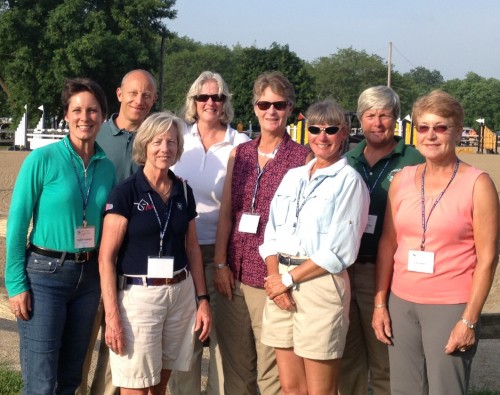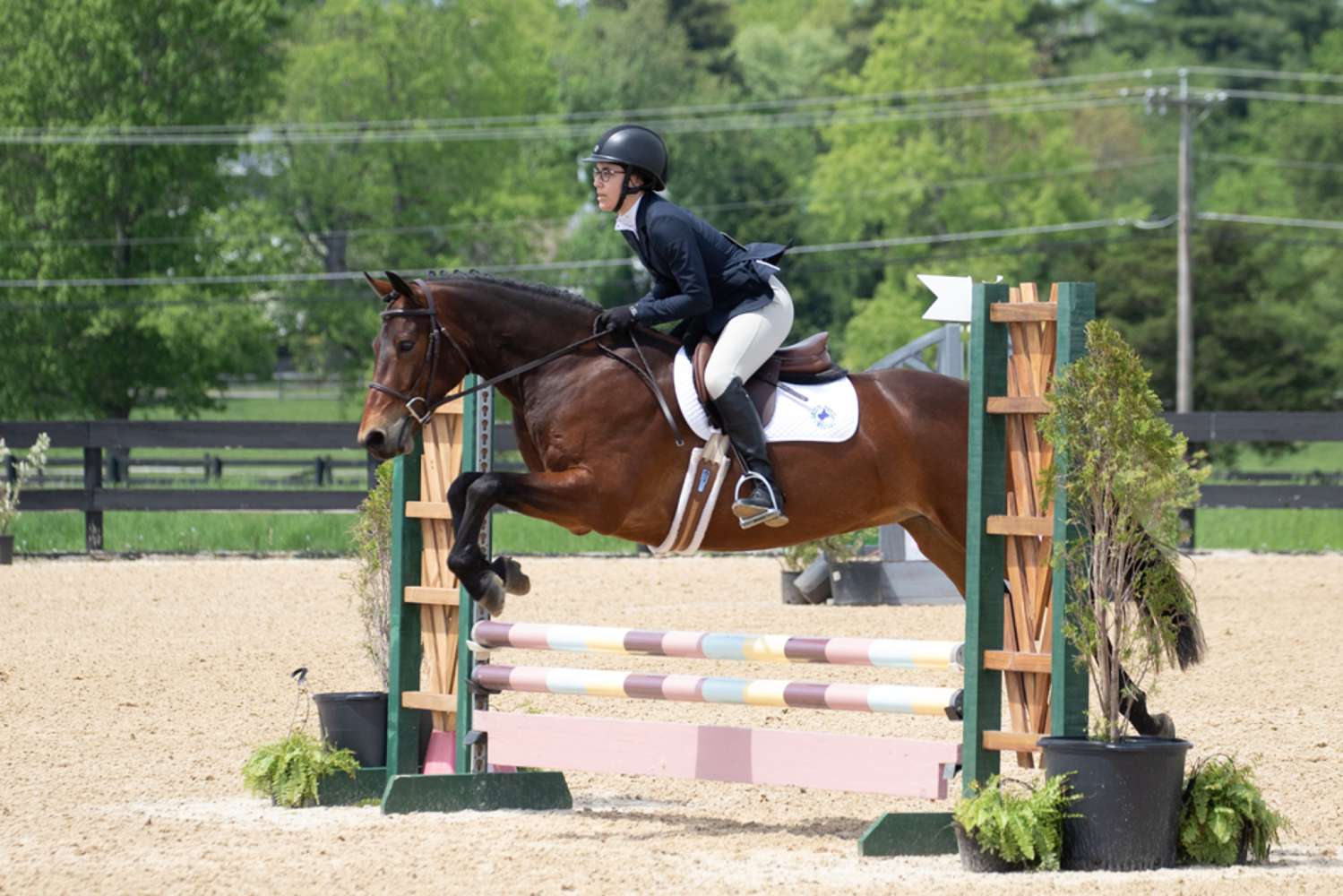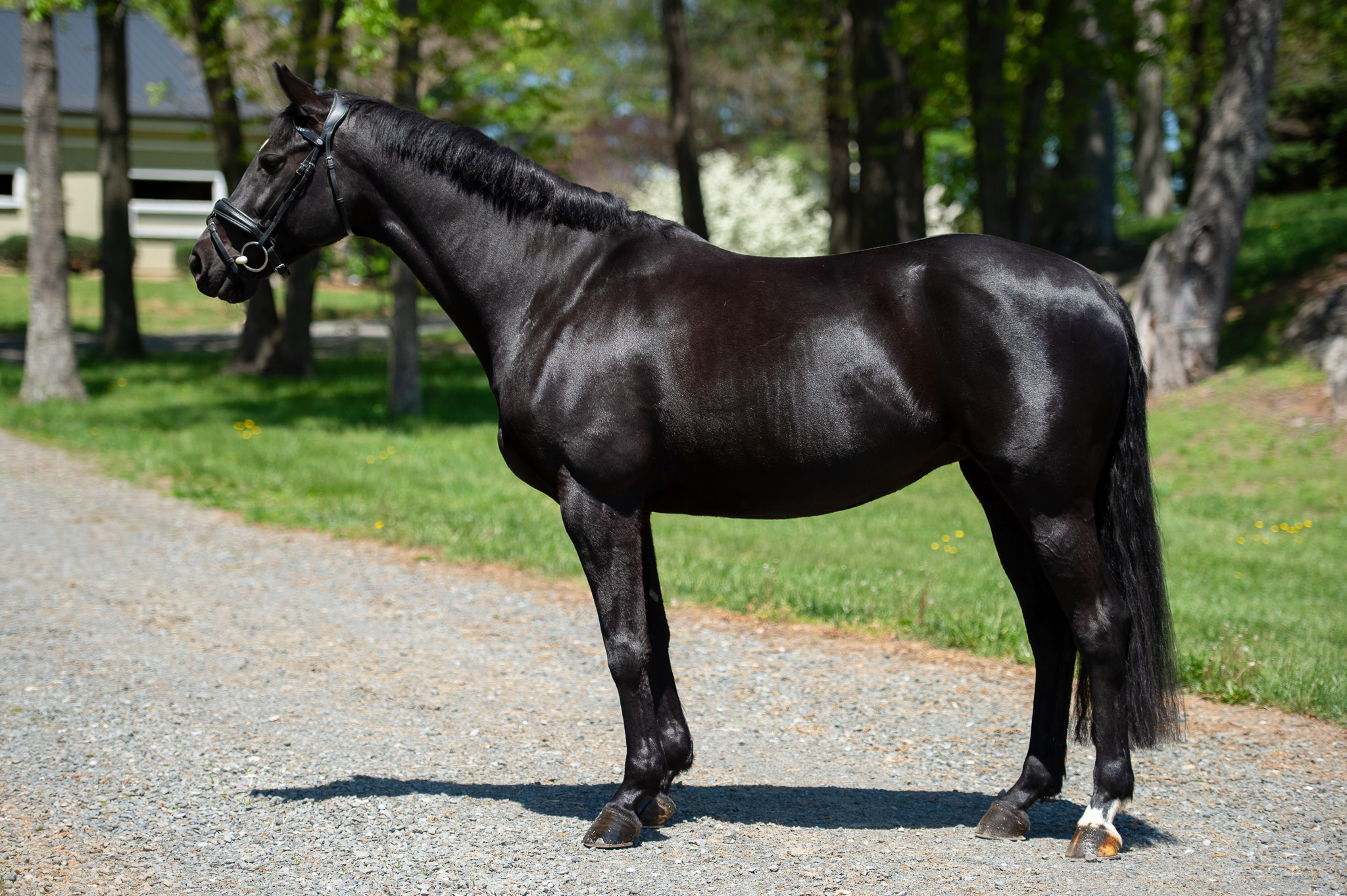
UPDATE 7/4/13:
It was brought to our attention last week by a reader that there were several errors in the translation we published of the Buschreiter.de opinion piece attacking Captain Mark Phillip’s and his Luhmuhlen course design. We commissioned a second translation and have confirmed that there were indeed several errors, two of which are substantive.
Firstly, the first translation of the article incorrectly translated the tense of a German sentence, implying that there was an official FEI course walk that recommended changes before the cross-country and that those changes were not implemented. In fact, the German article actually claims that there was an official FEI course walk AFTER cross-country that questioned the course design in retrospect. The German article does state in the previous paragraph that there were concerns before the event that the course might be too difficult. Captain Phillips clarified that “[e]verything the Ground Jury and TD wanted adjusted was done and everything requested by Chef d’Equipe’s, Coaches and Riders was done” in his rebuttal that we published on EN.
Secondly, the first translation incorrectly translated the German article as saying that Captain Mark Phillips wants to “go back to the old format.” The German article does not say this. A more correct translation is that “Phillips belongs to the group of hardliners, who would be happy to turn back the clock.” There is no direct mention of the old format.
There are a number of other less substantive but nonetheless unacceptable errors in the first translation as well, some of which made the article seem slightly more severe and some of which made the article come across slightly more mild. For example, one phrase was translated “What conclusions do we draw from this?” when it should have been translated “What consequences should follow?”
We apologize to Captain Phillips, the article’s author, and our readers for the confusion. Incidentally, our regular German translator was unavailable to do the original translation due to a death in her close family. We should have been more careful in handling the first translation and we will be more careful with translations in the future.
If you have any further questions, I encourage you to read the updated translation below. You will see that the tone of the article remains unchanged, including the most extreme and aggressive accusations. Captain Phillips addressed all of these in his very well received rebuttal and I very much encourage you to read that as well if you haven’t already.
-John
Updated Translation:
A Good Opportunity for a Fresh Start
On the one hand it is inappropriate to blame the course designer Mark Phillips for the fatal fall of the 10 yr old mare P’tite Bombe at jump 12 of the CCI**** in Luhmühlen. On the one hand. However on the other hand this fatal accident didn’t happen on the A7 between Kassel and Hanover, it happened on a cross country course built by Mark Phillips. So the designer is not completely uninvolved in the death of this horse and it would have perhaps been better if he had shown more compassion. Phillips was rather cold and detached during his appearance at the press conference after the cross country. And the statement: “That was the last obstacle at which I would have expected such an accident” is unfortunately, it has to be said, a purely cynical statement with devastating effects.
Even if Emeric George and P’tite Bombe had galloped across the finishing line in the time and without jumping faults, Mark Phillips could not have ignored the consequences of his course design in Luhmühlen. It appears that even before the event there had been fairly heated discussion as to the demands of the course and it was being said that the cross country in the Heide could possibly be too difficult. Unfortunately the dissatisfaction wasn’t enough to achieve any detailed changes; this often happens in this sort of situation.
Strangely enough, during a course walk undertaken by FEI officials the day after the cross country a number of critical undertones to various details of the course could be reported. A lot of discussion went on behind the scenes and is still going on. Were perhaps the composition and the technical expectations of both courses too difficult? Had Mark Phillips got carried away again and expected too much of horse and rider? What consequences should follow?
Example: Much uncomprehending head shaking went on as to why the difficult first water complex (Complex 4) was placed so early in the course – a question requiring concentration and strength in a phase just after the start when the horses have not yet found their rhythm. A technical error, quickly leading to severe and spectacular falls which were, as expected, presented by the “Bild am Sonntag” to its national readers at the Sunday breakfast table next day.
It is always a warning when experienced riders and horses, indeed the world best pairs, suffer refusals and falls during a cross country. Significant is also that Andrew Nicholson, the winner of numerous 4* events and one of the most experienced riders worldwide suffered a fall here with his second ride.
A top event like Luhmühlen is not an entertainment program for Ex-royals in early retirement. A lone wolf should not be allowed to be solely responsible for placing the cross country courses in the countryside for the two major international competitions in Germany. The development of a cross country course must ultimately be a joint project: the organizers, the sponsors, also the press, the local and national trainer, the technical delegate, riders and their horses and the course designer himself all have different expectations from the course. The real art of the course designer responsible is to tie all these into one package that not only fulfils the requirements but also to a great extent the expectations of the participants.
Doubts in believing Mark Phillips is a person capable of integrating and not always determined to assert himself against all who are not in agreement, are allowed. Is there a single person in the eventing circus from whom Mark Phillips would accept criticism?
“Three and a half stars” was the verdict on the CIC*** being murmured during the weekend of the competition. Had Mark Phillips taken into consideration that as part of the test there was to be a special rating for 7 – 9 year old horses and for riders under 25? Did he care? Or is he of the opinion that it is best to frustrate inexperienced horses and riders early in their careers as this is something they will often have to deal with later on? An effect that is not less devastating.
Ultimately, it comes down to the fundamentals: The current discussions in England as to whether the change in format has led to dressage and showing jumping playing a greater role in deciding who wins and losses and whether the cross is losing on importance, is being led by Mark Phillips. Phillips belongs to the group of hardliners, who would be happy to turn back the clock. He represents the group of designers who would like to make the cross country more difficult. And because big obstacles that are high and wide are no longer allowed in that form, the obstacles should become narrower and more technical, the distances extended and the speed increased.
Could it be that the defeat of the British team in Luhmühlen at the Europeans and then the shame of losing in London are putting pressure on the British national sport of eventing? Could it be that Mark Phillips is suffering from a dose of sporting nationalism? And perhaps the pressure of the British breeding industry, which is no longer able to sell as many of its four legged products due to the run on top continental eventing horses, is also taking its toll.
If the political sporting beliefs, nationalism and the economic factors are the deciding factors then the horses and the riders, the central figures in this wonderful sport are going to get left along the wayside. Especially the loyal creatures, which trust in the partnership with their jockeys, become pieces of sports equipment, degraded to being a pawn on the chessboard of “sport”. This also has a devastating effect.
One could stay on course. Then it would be inevitable that the awful images from Luhmühlen would be repeated. The media response would also remain negative. And if the photographers and reporters are pressurized by the organizers (this didn’t happen in Luhmühlen), it will all get a lot worse. The fear that one day eventing will no longer be in the Olympic program already exists. This would be a disaster for both amateur and professional riders. Fame hungry course designers would earn themselves the title of “the gravediggers of eventing”. A terrible thought!
The organizers and main sponsors of Luhmühlen would be well advised to reach a turning point before the 2014 season and replace, after a relatively long period time during which the cooperation was often very eventful, course designer Mark Phillips. The time is right for a fresh start. There are alternatives available and not the worst. Two or three potential candidates were sighted in Luhmühlen over the weekend (they were taking part in a FEI meeting). One may also speculate that a change is likely to save Luhmühlen a fair number of Euros!
——
Buschreiter.de, which looks to be the German equivalent of Eventing Nation, posted a scathing editorial yesterday about Capt. Mark Phillips’ CCI4* and CIC3* cross-country courses at Luhmühlen. As we reported last weekend, Emeric George’s mount P’tite Bomb was euthanized after a bad fall at fence 12 on course. The first water complex on course, fence 4ABC, was responsible for three horse falls: Andrew Nicholson and Qwanza, Nicola Wilson and Opposition Buzz, and Jennie Brannigan and Cambalda. Two riders fell there, and two riders — Ingrid Klimke and Tabasco TSF and Dirk Schrade and Edino — retired there. We’re publishing an English translation by a good friend of EN of the editorial, which originally appeared in German, to further the discussion about course design and safety at the highest levels of the sport. Weigh in, EN. What are your thoughts after reading the editorial?
The English translation from Buschreiter.de:
Good Time For A New Start, by Wolf-Deitrich Nar
On one hand, it is inappropriate to blame course designer Mark Phillips for the fatal fall of 10-year-old mare P’tite Bomb at jump 12 of the CCI **** in Luhmuehlen. On the one hand. On the other hand, this tragic accident did not happen on the the Autobahn between Kassel and Hanover, but on a cross country course, newly designed by Mark Phillips. So the designer is not completely uninvolved in the death of the horse. It would have been good of him to show a little more compassion. Phillips was very chilly and detached at his appearance at the press conference. He said that would be “the last obstacle” where he would have expected such an accident. It sounded purely cynical. A statement like that is nothing but devastating.
Even if Emeric and P’tite Bombe had been a double clean round, the consequences of his course designing abilities in Luhmuehlen would not have reflected well upon Mark Phillips. This is not the first time he has been under fire for his design of four star courses. Many weeks before the event, there were many discussions as to whether the course was too difficult. But, unfortunately, as happens often, discussions didn’t achieve any actual changes in course design.
Oddly enough, an FEI Official Course Walk noted some critical details that they felt should be changed; however, this was not implemented and it was not disclosed. Behind the scenes and discussed at length, did the two courses create enough challenges for the level? Has Mark Phillips once again overwhelmed riders and horses and created unrealistic technical questions? What conclusions do we draw from this?
Example: Many shake their heads as to why the difficult first water (obstacle complex 4) was placed so early in the course before the horses could find their rhythm. An error in craftsmanship. This resulted in many spectacular falls that appeared for the public for the magazine IMAGE on the front page at the breakfast table. This is not a good image for Eventing to have outside of the sport.
It is a big warning sign if experienced riders and experienced horses, indeed the world’s best couples, suffer cross country refusals and falls. Significantly, Andrew Nicholson, one of the world’s most experienced Eventers, fell at #4 with his second horse.
A top event as Lumühlen is not an entertainment program for ex-Royals in early retirement. The cross country of the two major international competitions in Germany should not be the province of one lonely wolf on the landscape. A safe and well designed cross-country course must ultimately be a joint effort: the organizers, sponsors, the media, the team coaches, the Technical Delegate, the riders with their horses and of course, the Course Designer himself formulate different requirements for the course. The art of the really good lead designer is to incorporate all those expectations into a singular package.
It is therefore unclear that Mark Phillips understands the art of being a true lead designer. Is there a global eventing forum from which Mark Phillips can comment on this?
“Three and a half star” was whispered everywhere on competition weekend at the CIC ***. Did Mark Phillips consider that the CIC3* was filled with horses 7-9 and riders under 25? Did he care? It is his opinion that horses and riders should learn early on how difficult everything is, before they go further in their career. This is devastating for development of younger horses and riders.
Ultimately, it comes back to basics: Mark Phillips was in England at the time of the discussions of whether to change the format for Eventing. Phillips would count as one who would prefer to turn back the clock and go back to the old format. Just because we no longer have the challenge of roads and tracks, he is in the small group of people who feel that to compensate we must have far more technical and sometimes unreasonable questions combined with an increased speed on cross country.
Can it be that the British defeat at the European Championships in Luhmühlen and then the shame of losing in London has become a lasting national trauma for the sport of Eventing in the UK? Perhaps Phillips is being driven by a nationalistic pride? And perhaps also the fact that British horses are now not as desirable as German sport horses?
Horses in sport used to be integral to the political beliefs, national and economic interests of the countries that they represented. Now, the loyal creatures that rely on the partnership of their jockeys are relegated to sports equipment, to objects on the chessboard of “sport.” This has a devastating effect upon the public view of our sport.
Of course, you can continue on this course. Then it is inevitable that you will have repeated bad outcomes in Luhmühlen. The media response will then be negative. And when photographers and reporters also set siege to organizers, everything will only get worse. There are already fears that one day due to our bad image from equine and human deaths that Eventing will no longer be included in the Olympics. A course designer such as Mark who consistently designs courses that cause horrific falls and deaths will in effect become the “gravedigger of our sport.” That would be a disaster for both amateurs and professionals. If this were to become true, Course Designers would be largely responsible for continuously creating situations in which our public profile is damaged. A devastating thought.
The organizer and main sponsors of Luhmühlen would be very wise now to risk a break before the 2014 season and replace course designer Mark Phillips after a long and volatile period of association. The time is right for a fresh start. There are staffing alternatives and not the worst. Two if not three potential successors have been sighted at the Luhmühlen competitions (because they have participated in FEI meetings). One may speculate that Luhmühlen would actually save a Euro by changing the course designer.
Click here to read the original editorial in German.











































































